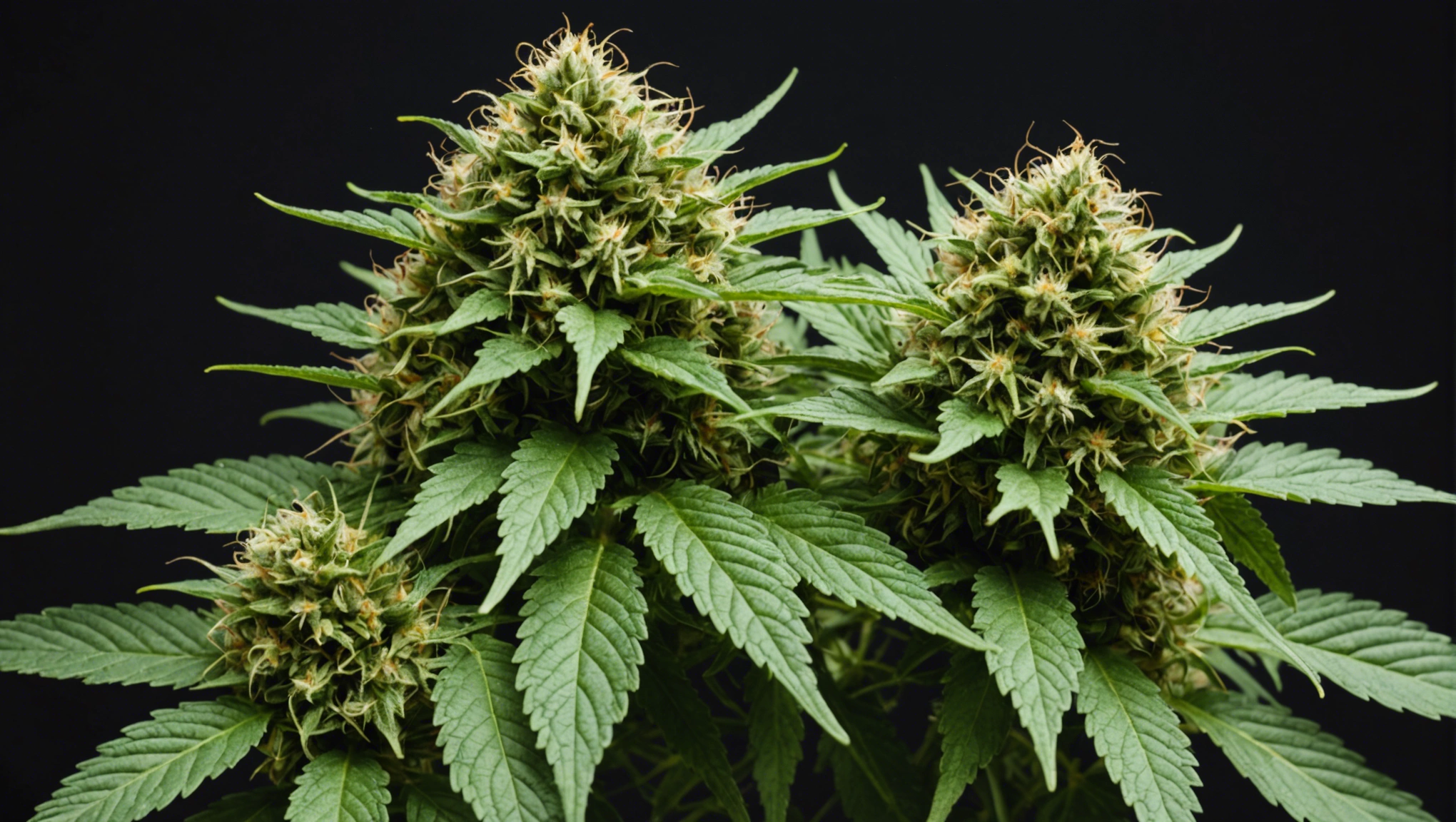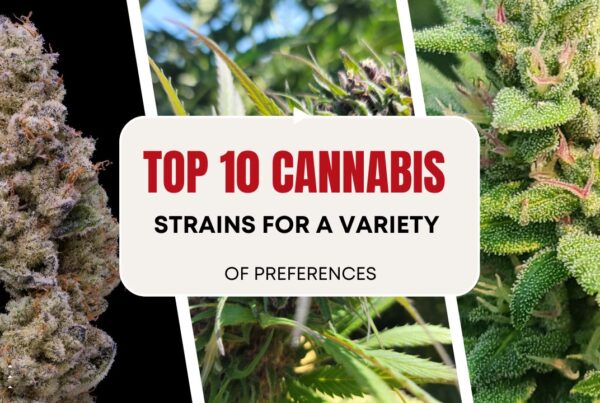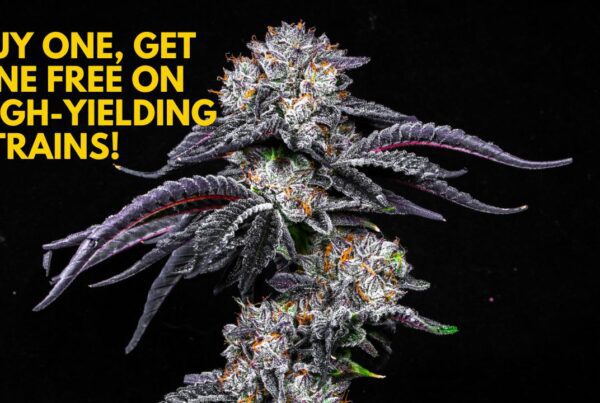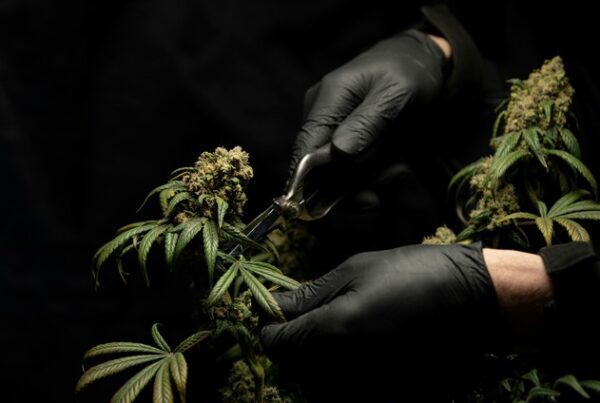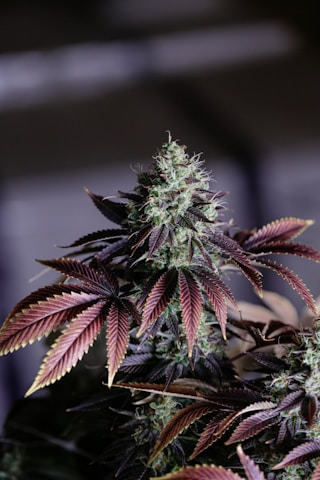Welcome to the fascinating world of autoflowering cannabis seeds!

In this exploration, we delve into the innovative realm of cannabis cultivation, where these seeds have revolutionized the growing process. Unlike traditional cannabis seeds, autoflowering seeds flower automatically, regardless of light cycles, making them ideal for both novice and experienced growers. This introduction will uncover the unique characteristics, benefits, and challenges associated with autoflowering cannabis seeds. From their rapid growth to their resilience, we will navigate through the key aspects that make them a popular choice among cannabis enthusiasts. Join us on this journey as we unravel the secrets behind these versatile seeds and discover how they are reshaping the landscape of cannabis cultivation.
Genetics and Characteristics of Autoflower Seeds
Role of Cannabis Ruderalis in Autoflowering Seeds
Cannabis Ruderalis, originating from regions like Russia and Central Asia, developed unique traits to survive in harsh environments. Its short stature, quick life cycle, and ability to flower based on age make it an ideal candidate for breeding autoflowering cannabis varieties. When Cannabis Ruderalis is crossed with other cannabis strains, it passes on its autoflowering gene, allowing the resulting hybrids to exhibit the same automatic flowering behavior. This genetic contribution from Cannabis Ruderalis is what sets autoflower seeds apart from traditional photoperiod-dependent seeds.
Automatic Flowering Process Explained
The automatic flowering process in autoflower seeds is a fascinating phenomenon. While photoperiod-dependent cannabis plants rely on changes in light exposure to trigger flowering, autoflower plants have a predetermined internal clock that signals them to bloom after a certain period. This internal mechanism is a result of the genetic influence of Cannabis Ruderalis. By understanding this process, growers can better plan their cultivation schedules and anticipate the flowering stage of autoflower plants. Additionally, the automatic flowering trait simplifies the growing process for beginners and allows for multiple harvests in a single growing season, making autoflower seeds a popular choice among cannabis cultivators of all levels of experience.
Advantages of Autoflower Seeds
In addition to their unique genetic makeup, autoflower seeds offer several advantages to growers. One of the key benefits is their fast growth and flowering time. Since autoflower plants switch to the flowering stage based on age, rather than light cycles, they typically have shorter flowering periods compared to photoperiod-dependent strains. This rapid growth cycle allows for quicker harvests, making autoflower seeds a preferred choice for those looking to cultivate cannabis with a shorter time frame.
Furthermore, the compact size of autoflower plants makes them ideal for indoor cultivation or discreet outdoor growing. Their small stature, inherited from Cannabis Ruderalis, allows growers with limited space to cultivate cannabis without drawing unwanted attention. This characteristic also makes autoflower seeds suitable for stealthy or guerrilla growing operations where keeping a low profile is essential.
Another advantage of autoflower seeds is their resilience to environmental stress. Cannabis Ruderalis, known for its ability to thrive in harsh conditions, imparts this resilience to autoflower hybrids. These plants can withstand fluctuations in temperature, humidity, and light exposure better than many photoperiod-dependent varieties, making them a reliable choice for novice growers or those facing unpredictable growing conditions.
Conclusion
Understanding the genetics and characteristics of autoflower seeds, particularly the role of Cannabis Ruderalis in their development, is essential for successful cultivation. The automatic flowering process driven by age rather than light exposure, along with the unique traits inherited from Cannabis Ruderalis, makes autoflower seeds a valuable addition to the cannabis cultivation landscape. With their fast growth, compact size, and resilience to environmental stress, autoflower seeds offer a convenient and reliable option for growers of all levels. By harnessing the benefits of autoflower seeds and leveraging their genetic advantages, cultivators can enjoy a rewarding growing experience and bountiful harvests of high-quality cannabis.
Cultivation and Yield Factors of Autoflowering Seeds
Autoflowering seeds have gained popularity among cannabis growers due to their unique characteristics and ease of cultivation. In this section, we will explore the key factors that influence the cultivation and yield of autoflowering seeds.
Optimal Growing Conditions for Autoflowering Seeds
To ensure the successful growth of autoflowering seeds, it is crucial to create and maintain optimal growing conditions. This includes providing the right temperature range, typically between 70-85°F (21-29°C), and controlling humidity levels around 40-70%. Proper ventilation is essential to prevent mold and mildew issues. Additionally, selecting a well-draining, nutrient-rich soil or using a hydroponic system can significantly impact plant health and yield.
Maximizing Yields Through Advanced Techniques
Growers looking to maximize yields from autoflowering seeds can implement advanced techniques such as super cropping, main-lining, or defoliation. These methods can help increase light penetration, airflow, and overall bud development. Moreover, utilizing organic nutrients and supplements specifically formulated for autoflowering plants can further enhance growth and yield potential.
Lighting Considerations for Autoflowering Plants
Light is a crucial factor in the cultivation of autoflowering seeds. Providing 18-24 hours of light per day during the vegetative stage and 12-18 hours during the flowering stage is recommended. Growers can choose from a variety of lighting options, including full-spectrum LEDs, which offer energy efficiency and customizable light spectrums for different growth phases. Supplemental lighting like UVB or far-red LEDs can also boost resin production and terpene profiles.
Nutrient Management for Autoflowering Seeds
In addition to lighting and growing conditions, proper nutrient management is vital for the successful cultivation of autoflowering seeds. These plants have specific nutrient requirements during each growth stage. Using a balanced fertilizer with the right NPK ratio and micronutrients can promote healthy growth and maximize yields. Overfeeding or underfeeding can lead to nutrient deficiencies or toxicities, affecting plant health and productivity.
Pest and Disease Control Strategies
Preventing and managing pests and diseases is essential to protect autoflowering plants and ensure optimal yield. Integrated pest management practices, such as regular monitoring, maintaining a clean grow environment, and using organic pest control methods, can help minimize the risk of infestations. Additionally, practicing proper sanitation and quarantine measures when introducing new plants can prevent the spread of diseases.
Harvesting and Curing Techniques
The timing of harvest and post-harvest processes significantly impact the quality and potency of autoflowering cannabis. Harvesting at the right time, typically when trichomes are milky or amber-colored, ensures peak cannabinoid and terpene levels. Proper drying and curing techniques, including slow drying in a dark, well-ventilated space and curing in glass jars with burping, enhance flavor, aroma, and overall smoking experience.
Mastering the cultivation and yield factors of autoflowering seeds requires a comprehensive approach that considers optimal growing conditions, advanced cultivation techniques, strategic lighting choices, nutrient management, pest control strategies, and proper harvesting and curing practices. By integrating these elements into your cultivation routine, you can achieve successful harvests with high yields, exceptional quality, and potent cannabinoid profiles.
Benefits of Popular Autoflowering Varieties
Autoflowering cannabis strains have gained immense popularity in recent years due to their unique characteristics and benefits. These strains are known for their ability to automatically switch from the vegetative stage to the flowering stage without requiring a change in light cycle. This makes them ideal for novice growers or those looking for a low-maintenance option.
THC and CBD Content in Autoflowering Plants
Another key benefit of popular autoflowering varieties is their THC and CBD content. While THC is responsible for the psychoactive effects of cannabis, CBD offers various therapeutic benefits without the high. Many autoflowering strains are bred to have balanced levels of THC and CBD, providing users with a more controlled and predictable experience. This makes them suitable for both recreational and medicinal users seeking specific effects.
Additional Benefits of Autoflowering Varieties
-
Quick Harvest Cycles: Autoflowering strains have shorter life cycles compared to photoperiod strains, allowing for quicker harvests and multiple crops in a single growing season.
-
Stealth Growing: Due to their compact size and rapid growth, autoflowering plants are ideal for stealth growing operations where space is limited or privacy is a concern.
-
Resilience: Autoflowering varieties are known for their resilience to environmental stressors, making them suitable for outdoor cultivation in various climates.
-
Variety of Flavors and Aromas: Breeders have developed a wide range of autoflowering strains with diverse flavor profiles and aromas, catering to different preferences and tastes.
-
Beginner-Friendly: The low maintenance requirements and forgiving nature of autoflowering plants make them perfect for beginners or those with limited growing experience.
-
Increased Potency: Some autoflowering strains are bred to have higher THC or CBD levels, catering to users seeking stronger effects or specific medicinal benefits.
-
Pest and Disease Resistance: Autoflowering varieties often exhibit natural resistance to pests and diseases, reducing the need for chemical interventions and making them a sustainable choice for cultivation.
-
Indoor and Outdoor Versatility: Autoflowering strains thrive in both indoor and outdoor environments, offering flexibility to growers with varying setups and preferences.
The benefits of popular autoflowering varieties extend beyond their unique growth characteristics to include diverse cannabinoid profiles, quick harvest cycles, resilience, beginner-friendly attributes, increased potency options, pest and disease resistance, as well as indoor and outdoor versatility. Whether you are a recreational user looking for convenience or a medical user in search of specific therapeutic effects, autoflowering strains provide a versatile and rewarding cultivation experience.
Tips for Successful Breeding of Autoflowering Plants
Breeding autoflowering plants can be a highly rewarding endeavor for cultivators seeking efficient and rapid results. However, navigating the intricacies of hybrid breeding, managing the short time to harvest, and optimizing plant stature are crucial for successful outcomes. In this comprehensive guide, we delve deeper into essential tips to ensure the successful breeding of autoflowering plants.
Hybrid Breeding Challenges: Overcoming Genetic Hurdles
A fundamental aspect of breeding autoflowering plants involves addressing hybrid breeding challenges. This encompasses a thorough understanding of parent plant genetics, meticulous selection of compatible strains for hybridization, and precise management of the breeding process to preserve and enhance desired traits. By conducting detailed research and implementing strategic breeding techniques, breeders can effectively navigate genetic complexities and achieve successful hybridization.
Short Time to Harvest: Maximizing Efficiency
One of the distinctive features of autoflowering plants is their abbreviated life cycle in comparison to traditional photoperiod plants. While the rapid time to harvest presents breeders with an advantage, it also necessitates meticulous planning and execution to capitalize on this accelerated growth cycle. Implementing efficient breeding strategies, such as staggered planting schedules and optimized nutrient regimens, can help breeders maximize productivity and yield within the condensed timeframe.
Plant Stature: Optimizing Growth
The stature and morphology of autoflowering plants play a pivotal role in the breeding process, influencing space utilization, environmental requirements, and overall crop yield. Breeders must carefully monitor and manage plant stature through techniques like selective pruning, training methods, and environmental manipulation to create an ideal breeding environment. By prioritizing plant health and structural integrity, breeders can enhance genetic expression and cultivate robust, high-quality strains with desirable characteristics.
Enhancing Genetic Diversity: Key to Long-Term Success
Incorporating genetic diversity into breeding programs is essential for ensuring the long-term success and sustainability of autoflowering plant cultivation. By introducing novel genetic traits through controlled crossbreeding and hybridization, breeders can broaden the genetic pool, enhance resilience to environmental stressors, and develop unique phenotypic expressions. Embracing genetic diversity not only enriches breeding outcomes but also fosters innovation and adaptation in response to evolving market demands and cultivation challenges.
Environmental Optimization: Creating Ideal Growth Conditions
Creating optimal environmental conditions is paramount for maximizing the potential of autoflowering plants during the breeding process. Factors such as light intensity, temperature, humidity levels, and air circulation significantly impact plant growth, development, and overall productivity. Breeders should design cultivation spaces that provide consistent environmental parameters, utilize supplemental lighting to extend photoperiods when necessary, and implement climate control measures to mitigate stress and promote healthy plant growth. By fine-tuning environmental variables and maintaining stable growth conditions, breeders can optimize genetic expression, enhance crop quality, and achieve superior breeding outcomes.
Quality Assurance and Testing: Ensuring Genetic Stability and Performance
Quality assurance and rigorous testing protocols are indispensable components of successful autoflowering plant breeding. Breeders should conduct thorough genetic testing, phenotype evaluations, and stability assessments to verify the consistency and performance of newly developed strains. By implementing quality control measures, breeders can identify and eliminate genetic anomalies, maintain strain purity, and uphold breeding standards. Additionally, collaborating with reputable testing facilities and research institutions can provide valuable insights into genetic profiles, cannabinoid compositions, and overall plant characteristics, facilitating informed breeding decisions and enhancing breeding precision.
By integrating these advanced tips and strategies into their breeding practices, cultivators can elevate their success rates, refine genetic profiles, and cultivate premium autoflowering strains that embody superior quality and potency.
Common Misconceptions and FAQs about Autoflowering Seeds
Dispelling Myths Surrounding Autoflowering Seeds
-
Autoflowering seeds are less potent than regular seeds
One common misconception about autoflowering seeds is that they are less potent than regular seeds. While it is true that autoflowering strains tend to have lower THC levels compared to some photoperiod strains, this does not necessarily mean they are less potent overall. Many autoflowering varieties still offer a high level of THC and can provide a potent high for users.
-
Autoflowering seeds cannot be cloned
Another myth surrounding autoflowering seeds is that they cannot be cloned. While it is true that autoflowering plants have a fixed life cycle and tend to flower quickly, making cloning more challenging, it is still possible to clone autoflowering plants with the right techniques. However, it’s essential to note that the success rate of cloning autoflowering plants may vary.
-
Autoflowering seeds are not suitable for beginners
Contrary to popular belief, autoflowering seeds can be an excellent choice for beginners. These seeds are known for their resilience, fast growth, and relatively low maintenance requirements, making them ideal for novice growers. Additionally, the quick flowering time of autoflowering plants allows beginners to see results more rapidly, boosting their confidence and experience in cultivation.
-
Autoflowering seeds have a fixed life cycle
While autoflowering seeds do have a predetermined life cycle due to their genetic makeup, this does not mean that growers have no control over the plant’s growth. By providing optimal growing conditions, such as proper lighting, nutrients, and environmental factors, growers can influence the overall health and yield of autoflowering plants.
Answering Frequently Asked Questions
-
How long does it take for autoflowering seeds to flower?
Autoflowering seeds typically take around 8 to 10 weeks from seed to harvest, making them one of the fastest-growing cannabis varieties available.
-
Do autoflowering seeds require a specific light cycle?
Autoflowering seeds do not require a specific light cycle and can thrive under various light schedules, including 18/6 or 20/4 light/dark cycles.
-
Can autoflowering seeds be grown outdoors?
Yes, autoflowering seeds are well-suited for outdoor cultivation, especially in regions with short summers or unpredictable weather conditions.
-
Are autoflowering seeds suitable for indoor growing?
Autoflowering seeds are ideal for indoor growing due to their compact size, quick flowering time, and ease of cultivation in controlled environments.
-
What are the benefits of using autoflowering seeds?
Some benefits of using autoflowering seeds include their fast growth, automatic flowering, and ability to produce multiple harvests in a single growing season.
-
Are there any special considerations when growing autoflowering seeds?
When growing autoflowering seeds, it is essential to provide adequate light, nutrients, and airflow to ensure healthy plant development and maximize yields.
-
Can autoflowering seeds be used for breeding purposes?
While autoflowering seeds can be used for breeding, they may not be suitable for creating stable hybrid strains due to their unique genetic traits.
-
How do autoflowering seeds compare to photoperiod seeds in terms of yield and quality?
Autoflowering seeds generally produce smaller yields compared to photoperiod seeds but offer faster harvest times and increased resilience to light stress.
-
Are there any tips for maximizing the yield when growing autoflowering seeds?
To maximize yields when growing autoflowering seeds, consider techniques such as low-stress training, defoliation, and optimizing environmental conditions for plant growth.
-
What are some common mistakes to avoid when growing autoflowering seeds?
Common mistakes to avoid when growing autoflowering seeds include overfeeding, underwatering, improper lighting, and neglecting plant training techniques for optimal growth and yield.
In conclusion
Delving into the world of autoflowering cannabis seeds opens up a realm of possibilities for both novice and experienced growers alike. Understanding the nuances between feminized, regular, and autoflowering seeds is crucial in selecting the right fit for your cultivation needs. The benefits of feminized seeds, such as increased yield, consistency, and efficiency, make them a popular choice among growers seeking quality and convenience.
For those looking to explore the realm of feminized cannabis seeds further, the webpage at. https://jgseeds.com/find-your-perfect-feminized-cannabis-seeds/ Offers a wealth of information on top feminized seed strains, growing tips, and the advantages of incorporating feminized seeds into your cultivation practices. Whether you are aiming for a bountiful harvest or seeking specific effects from your plants, the guidance provided can help you navigate the world of feminized cannabis seeds successfully.
Take the next step in enhancing your cannabis cultivation journey by visiting the provided link and discovering the perfect feminized seeds tailored to your preferences and growing environment. Happy growing!.

